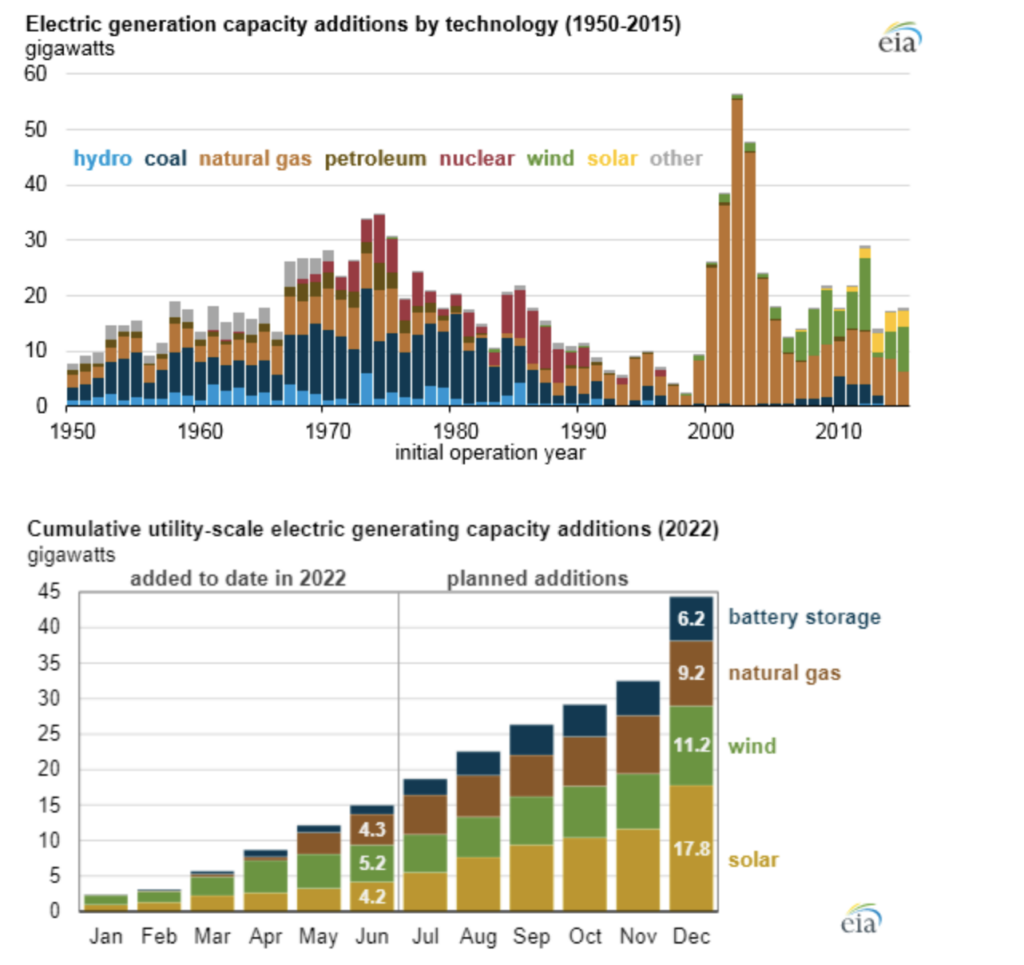As the global climate is trending towards higher temperatures and drastic environmental alterations, combined with a steadily growing global population, humanity’s demand for energy and comfort is more voracious than ever.
According to the latest data presented by the US Energy Information Administration (EIA), “more than half of a household’s annual energy consumption is for just two energy end uses: space heating and air conditioning [5].” When HVAC (heating, ventilation, and air conditioning) systems are used to counter rising global temperatures and climate-caused discomforts, the result is peak electrical loads and a lack of sufficient energy storage. In other words, the result is the highest power demand on the electrical grid in a short time frame, and a lack of energy storage capacity to compensate for this demand.
The demand of energy is again showed by the EIA as they proclaim, “in 2021, the average nominal retail electricity price paid by U.S. residential electric customers rose at the fastest rate since 2008, increasing 4.3% from 2020 to 13.72 cents per kilowatt-hour (kWh), according to data [1].”
Along with an increased electricity demand, the transition for the rest of the US to move from fossil fuel reliance to using renewable energy is a seeming slow process and major conflict to the energy supply. One of the bigger sources of energy that the US relies on comes from natural gas. Its price continues to rise due to Russia’s war with Ukraine, both of whom are major suppliers, and pipelines that bring natural gas in from other parts of the United States remained constrained due to environmental concerns [2]. Alternative renewable energy sources are not yet fully in place to be able to completely displace fossil fuels. With the coming of harsh winters and increased demand for energy, it’s only exposing the challenges of this transition even more. Current energy solutions, such as offshore wind are not yet fully developed, leaving officials to scramble for solutions that don’t further tie the region to increased fossil fuel reliance [4]. Said by Richard Glick, chairman of the U.S. Federal Energy Regulatory Commission (FERC) “Increasingly frequent cold snaps, heat waves, drought and major storms continue to challenge the ability of our nation’s electric infrastructure to deliver reliable affordable energy to consumers [3].”
The variability of renewable energy capacity is another major issue contributing to the decreased energy supply. Current renewable solar and wind energy supply only works when the sun is out and wind is blowing. Looking at the graph, America has been adding an increasing amount of variable renewable energy generation, while fossil fuel energy generation is continuing to decrease. This graph further demonstrates the current transition period to renewable energy [5].

With the increased prominence of extreme weather events along with the increase of the global population, the demand for energy subsequently grows and the supply of energy is currently in a stagnant state. This is causing an energy crisis, making it more important than ever to look for and develop innovative solutions to these issues.
If we can help relieve the issue of people living comfortably while reducing input from the power grid, then this solution will relieve the increasingly prominent stress on the energy grid, as there is less of a demand for energy in residential households.
Sources:
[1] During 2021, U.S. retail electricity prices rose at fastest rate since 2008. Homepage – U.S. Energy Information Administration (EIA). (n.d.). Retrieved October 16, 2022, from https://www.eia.gov/todayinenergy/detail.php?id=51438#:~:text=In%202022%2C%20we%20expect%20the,macroeconomic%20data%20from%20IHS%20Markit.
[2] March 15, 2022 M. D. C. L. (2022, July 6). What is the keystone XL pipeline? NRDC. Retrieved October 16, 2022, from https://www.nrdc.org/stories/what-keystone-pipeline
[3] Person, & Disavino, S. (2022, June 29). U.S. power companies face supply-chain crisis this summer. Reuters. Retrieved October 16, 2022, from https://www.reuters.com/business/energy/us-power-companies-face-supply-chain-crisis-this-summer-2022-06-29/
[4] Shankman, S. (2022, September 28). Trouble brewing in the power grid as officials warn of possible electricity shortages in N.E. this winter – The Boston Globe. BostonGlobe.com. Retrieved October 16, 2022, from https://www.bostonglobe.com/2022/09/27/science/trouble-brewing-power-grid-officials-warn-possible-electricity-shortages-this-winter/
[5] U.S. Energy Information Administration – EIA – independent statistics and analysis. Use of energy in homes – U.S. Energy Information Administration (EIA). (n.d.). Retrieved October 16, 2022, from https://www.eia.gov/energyexplained/use-of-energy/homes.php